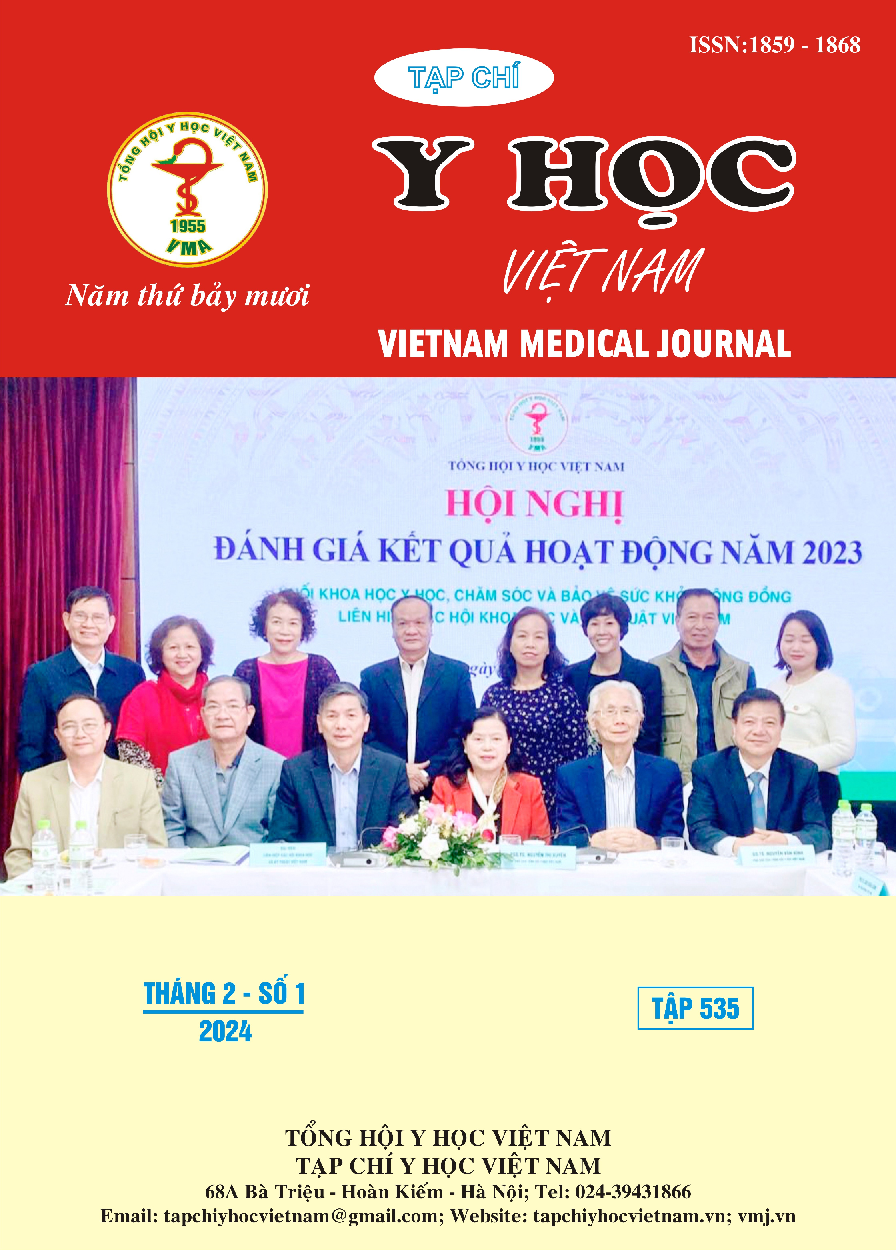EVALUATION OF RETINOPATHY STATUS IN DIABETIC PATIENTS AT DUC GIANG GENERAL HOSPITAL
Main Article Content
Abstract
Objectives: Describe the clinical characteristics of diabetic retinopathy at Duc Giang General Hospital; Assess the stage of diabetic retinopathy and its related factors; Conduct a survey on the applications of artificial intelligence in evaluating retinas of diabetic patients. Materials and methods: The study included patients diagnosed with diabetes who sought examination and treatment at the Eye Clinic of Duc Giang General Hospital. The research was conducted from August 2022 to July 2023, employing a cross-sectional descriptive study approach involving 150 patients. Participants were individuals diagnosed with diabetes who willingly participated and were randomly selected based on the medical examination list until the required sample size was reached. Color fundus images were examined by a vitreoretinal fluid specialist using the 2017 International Council of Ophthalmology (ICO) classification standards and were compared with the outcomes obtained from the Cybersight AI artificial intelligence application software. Results: The average age of patients in the study was 67.42 (±9.68) years old, with a predominant representation of women, and type 2 diabetes accounting for the majority at 96.7%. The primary duration of the disease was less than 5 years, constituting 65.3%. The prevalence of diabetic retinopathy was 44.66%. The most common retinal lesions observed were microaneurysms (44.67%), hard exudates (22%), retinal hemorrhages (20%), and macular edema at 15.78%. HbA1C concentration, disease duration, and retinal damage showed a significant association with p < 0.05. While dyslipidemia and blood pressure didn't exhibit a direct association with retinal damage in the study group, individuals with diabetic retinal damage in our study presented with dyslipidemia (60.67%) and hypertension (53.33%). The Cybersight AI software demonstrated a sensitivity of 95.61%, specificity of 89.62%, and an accuracy of 91.92% in diagnosing diabetic retinopathy. Conclusion: The rate of diabetic retinopathy is 44.66%. The study did not identify a significant relationship between hypertension, dyslipidemia, and diabetic retinopathy. However, it did reveal a close association between the HbA1c factor and the duration of diabetes with diabetic retinopathy. The application of artificial intelligence for screening diabetic retinopathy exhibits very high sensitivity and specificity.
Article Details
References
2. Thái Hồng Quang. Góp Phần Nghiên Cứu Biến Chứng Mạn Tính Trong Bệnh Đái Tháo Đường. Luận án PTS khoa học Y dược. 1989.
3. Shaw JE, Sicree RA, Zimmet PZ. Global estimates of the prevalence of diabetes for 2010 and 2030. Diabetes Res Clin Pract. 2010;87(1):4-14.
4. Kalavar M, Al-Khersan H, Sridhar J, et al. Applications of Artificial Intelligence for the Detection, Management, and Treatment of Diabetic Retinopathy. Int Ophthalmol Clin. 2020;60(4):127-145.
5. Tạ Văn Bình. Những Nguyên Lý, Nền Tảng Bệnh Đái Tháo Đường Tăng Glucose Máu. Nhà xuất bản Y học; 2007.
6. Teo ZL, Tham YC, Yu M, et al. Global Prevalence of Diabetic Retinopathy and Projection of Burden through 2045: Systematic Review and Meta-analysis. Ophthalmology. 2021;128(11): 1580-1591.
7. Zegeye AF, Temachu YZ, Mekonnen CK. Prevalence and factors associated with Diabetes retinopathy among type 2 diabetic patients at Northwest Amhara Comprehensive Specialized Hospitals, Northwest Ethiopia 2021. BMC Ophthalmol. 2023;23(1):9.
8. Teo ZL, Tham YC, Yu M, Cheng CY, Wong TY, Sabanayagam C. Do we have enough ophthalmologists to manage vision-threatening diabetic retinopathy? A global perspective. Eye Lond Engl. 2020;34(7):1255-1261.


